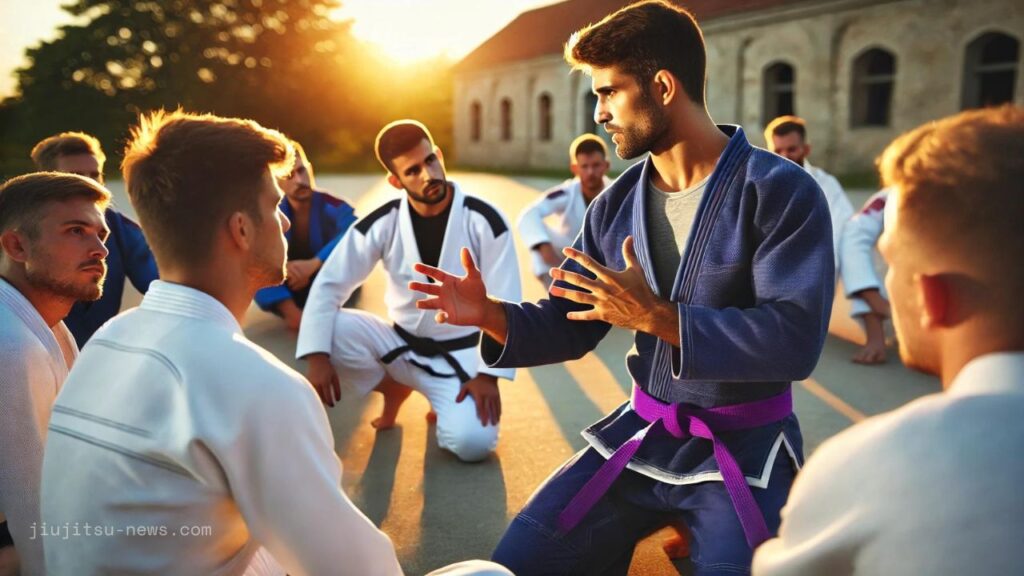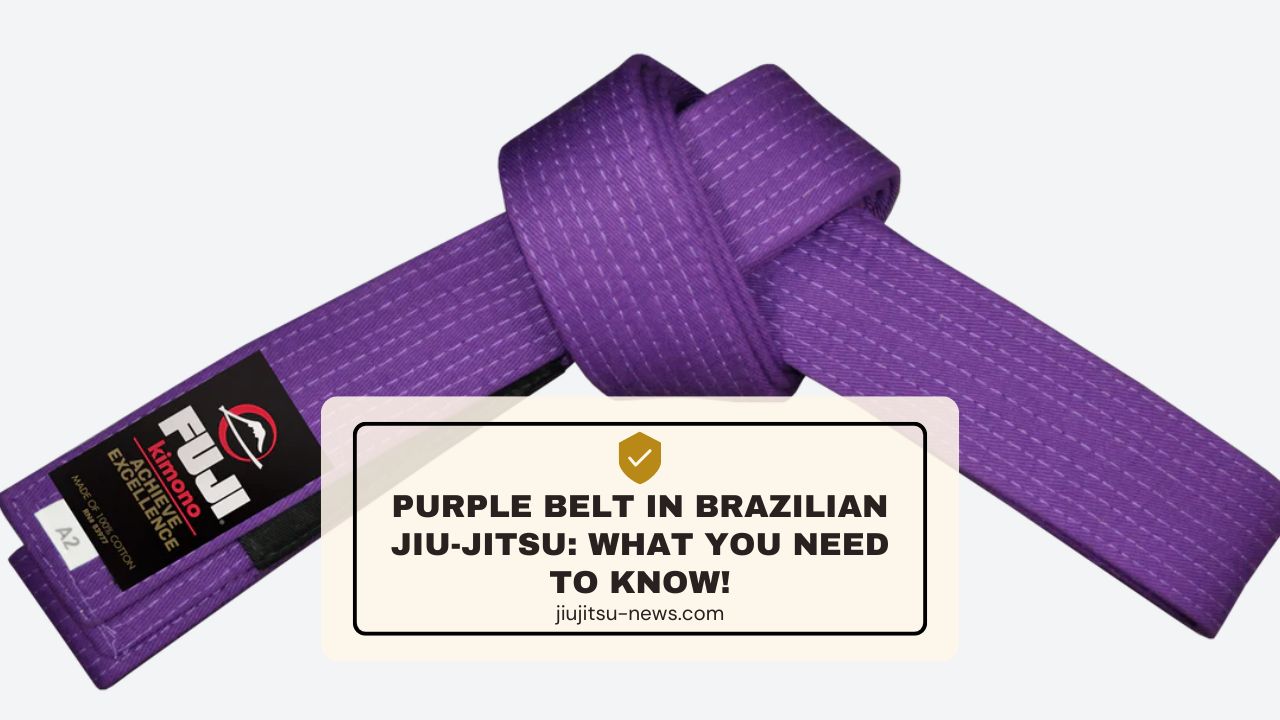Hey! If you’re on the Brazilian jiu-jitsu journey, hitting the purple belt is a big deal. It’s the third belt you get, right after white and blue.
Let’s talk about what it means to be a purple belt and why it’s so cool.
The Real Deal About the Purple Belt in Brazilian Jiu-Jitsu

Ever wonder what getting a purple belt in Brazilian Jiu-Jitsu really means?
Landing a purple belt is a pretty big milestone in BJJ—it’s the third tier up, nestled right between the blue and brown belts.
If you’ve reached this level, it means you’ve been on the mats for at least four years, showing some serious dedication and grit in your training.
But the purple belt isn’t just about time served. It’s a testament to your versatility and skill across a bunch of different techniques.
Purple belts are like the Swiss Army knives of BJJ; they’ve got a deep toolkit that lets them adapt and take control.
Whether they’re facing lower-ranked rookies or even those daunting higher belts.
Climbing Up to Purple Belt in Brazilian Jiu-Jitsu

So, you’re aiming for that purple belt in BJJ, huh? It’s a big leap in the jiu-jitsu world and sits nicely after the white and blue belts.
On average, you’re looking at about four years of solid training to earn a purple belt.
But hey, if you’ve got some experience in other martial arts, you might speed through the ranks a bit quicker and snag that purple belt in less time.
The journey to purple isn’t just about time though. Each jiu-jitsu academy has its own set of rules on what they expect from you.
Some might be super strict, making you work a bit harder and longer before they tie that purple belt around your waist.
Getting this belt isn’t just about learning moves but mastering them.
You’ve got to show you can not only do the techniques but also use them smartly in actual sparring sessions.
So, focus on improving your game, no matter how long it takes to move up. Each step forward is a win!
How Great Purple Belts Are?

What really sets Purple Belts apart is its strategic mindset.
They’re not just reacting; they’re planning two steps ahead, spotting weaknesses in their opponents and turning those into opportunities.
This strategic edge, combined with sharp execution of techniques, makes them tough competitors on the mats.
As they keep pushing forward, purple belts refine their moves, get smoother with their transitions and timing, and generally level up their game.
This stage is key—it’s where you prep for the advanced ranks and really start to finesse your approach to BJJ.
Wrapping Up
Getting your purple belt in Brazilian jiu-jitsu is a big step.
It is the third colored belt in BJJ, which shows that you’ve put in the time and effort to excel at this martial art.
So keep at it, and enjoy the journey in BJJ!



